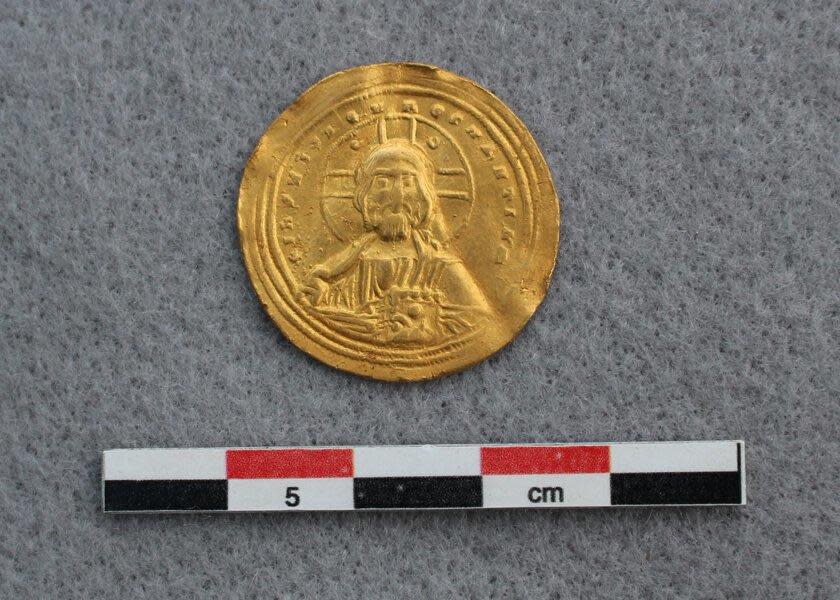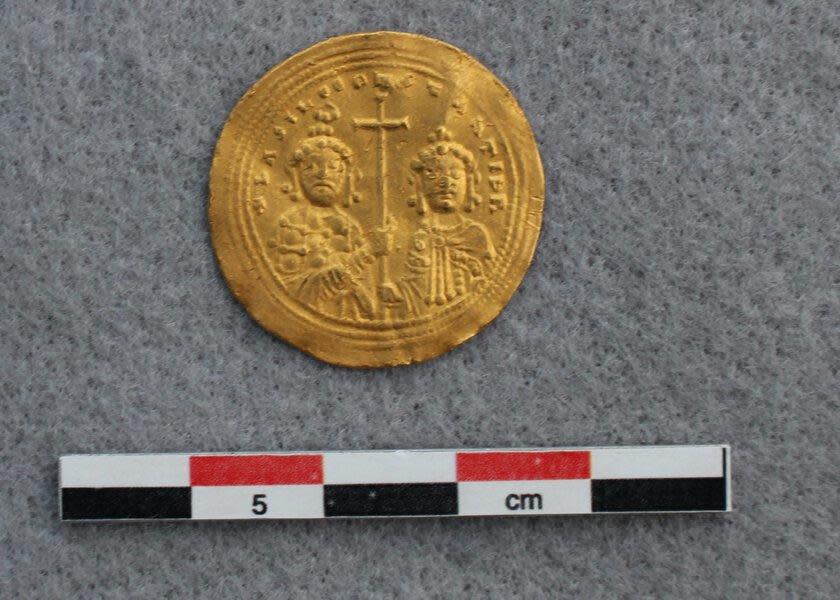Rare ancient gold coin found in Norway — over 1,600 miles from its origin
- Oops!Something went wrong.Please try again later.
A "very rare" ancient gold coin found recently in the mountains of central Norway could be lost cash that once belonged to an early monarch, according to Norwegian officials.
The gold coin was discovered by a metal detectorist in Vestre Slidre, a rural city known for skiing, in Norway's south-central Innlandet County. Technically called "histamenon nomisma," the coin was first introduced around 960 C.E. and used as standard Byzantine currency, the Innlandet County Municipality said in a news release. That means the artifact would have traveled more than 1,600 miles from its origin site to the spot where it was found.
"It has held up exceptionally well. The coin appears largely unchanged from when it was lost, perhaps a thousand years ago," the news release said.

The ancient coin was introduced in the Byzantine Empire, also called the Eastern Roman Empire, and likely was minted in Constantinople, the Byzantine capital that is Istanbul today. It is decorated on both faces, with one side appearing to show an embossed illustration of Christ holding a Bible. The other side appears to depict the former Byzantine emperors Basil II and Constantine VIII, according to Innlandet County. The two brothers were named co-rulers of the Byzantine Empire toward the end of the 9th century. Knowing the time frame of their reign, officials say the coin found in Norway was probably minted at some point between 977 and 1025 C.E.
The coin has written inscriptions, too. One, written in Latin by the stamp of Christ, says, "Jesus Christ, King of those who reign." The other, written in Greek on the coin's opposite side, says, "Basil and Constantine, emperors of the Romans," according to the county.

At the height of its power, the Byzantine Empire comprised much of the land surrounding the Mediterranean Sea, including parts of Italy, Greece and Turkey, as well as portions of northern Africa and the Middle East. Innlandet officials have speculated about the route over which the gold coin could have traveled to end up where it did, and why that might have happened.
One possible explanation is that it once belonged to Harald Hardråde, a Norwegian king who ruled from 1046 to 1066 C.E., after previously serving as a guard for the Byzantine Empire in Constantinople.
"At that time it was customary for the guards to be given the right to loot the palace and take all the valuables they could find when the emperor died. During Harald's time in Byzantium, three emperors had died," officials said. So, the former king could have acquired the gold coin in Constantinople and taken it back with him to Norway.
The gold coin could have also made its way into Norway's early salt trade, which had transport routes that ran perpendicular from western Norway across the country.
Because the metal detectorist found the coin so late in the fall season, the spot where it was discovered will not be investigated further until next year.
This was not the first time a metal detectorist struck gold while probing the land in Norway. Over the summer, a Norwegian man found nine pendants, three rings and 10 gold pearls with a metal detector in the southern island of Rennesoey, near the city of Stavanger. And, in October, the Museum of Cultural History in Oslo announced that dozens of ancient gold-foil figures depicting images of Norse gods were found at the site of a pagan temple near a farm in Vingrom, about 100 miles south of the capital city.
Companies, countries battle to develop quantum computers | 60 Minutes
Titanium hip implants expected to last decades snapped in hundreds of people
Eye Opener: Virginia house explodes as police try to serve search warrant

